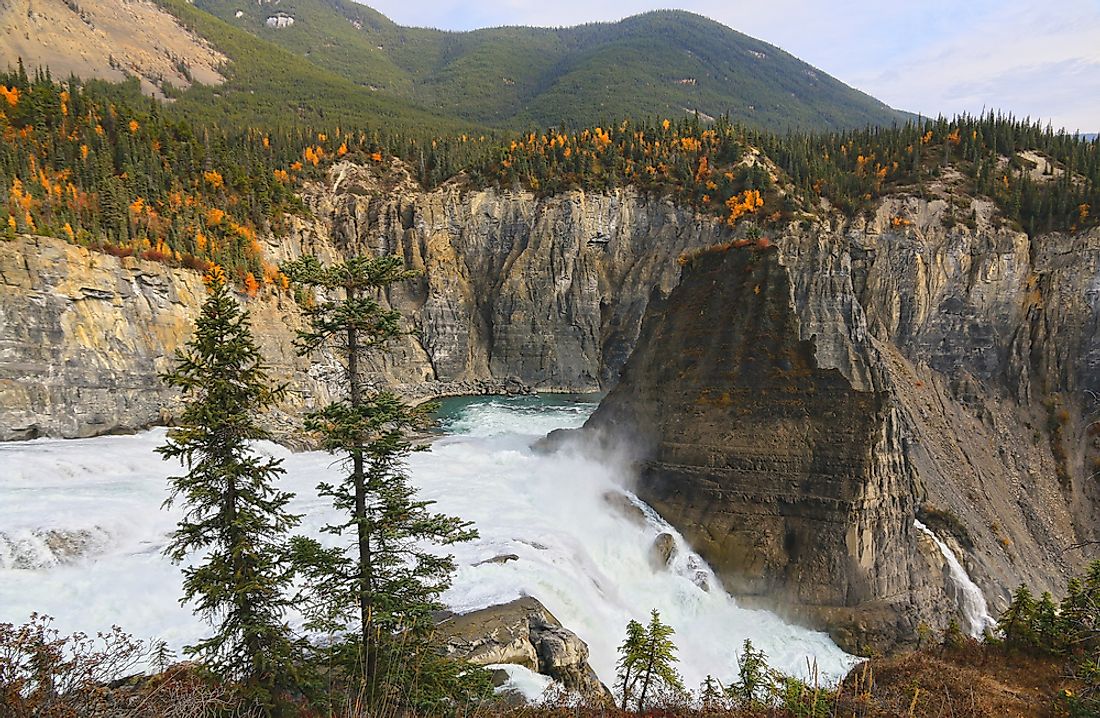National Parks in the Northwest Territories

The Northwest Territories is the largest of the three federal territories located in Northern Canada. The territory occupies an area of 1,144,000 square km, has a population of 44,291, and Yellowknife is the territorial capital. Northwest Territories is composed of large lakes, like Great Bear Lake and Great Slave Lake, deep canyons, mountains, several islands on the Atlantic Ocean, and vast tracts of protected areas. The Northwest Territories has three national parks, two national park reserves, and a national landmark. These parks are listed below.
6. Tuktut Nogait National Park
Tuktut National Park is located in the Northwest Territories and was established in 1998. The park encompasses an area of 18,100 square km, and is home to several species of wildlife, like Arctic char, wolves, muskoxen, red foxes, golden eagles, and rough-legged hawks. Part of the national park also serves as calving grounds for the Bluenose-West caribou The area has been home to humans since AD 1000, which is evident by a large number of archeological sites. Although hunting is prohibited in the national park, special allowances are made to the region's indigenous inhabitants, the Inuvialuit beneficiaries, who are allowed to follow subsistence harvesting.
5. Aulavik National Park
Aulavik National Park was established in 1992 and covers an area of 12,274 square km on the Banks Island of Canada’s Northwest Territories. The national park protects a vast area of Arctic Lowlands and is accessible by plane through four landing sites. Notable wildlife in the park include the world’s largest concentration of muskoxen, endangered Peary caribou, polar bears, and the barren-ground caribou. Several other mammal species such as wolves, hares, and foxes also live in the park. Bird species, such as snowy owls, peregrine falcons, and gyrfalcons, as well as marine animals like seals and whales also live in Aulavik National Park.
4. Wood Buffalo National Park
Wood Buffalo National Park is located in both the Northwest Territories and Alberta. The national park has an area of 44,807 square km, which makes it greater in size than Switzerland. The national park is noted for being home to the world's largest wild herd of wood bison. In fact, the park was founded in 1922 for the purpose of protecting the herd. The park has a varied landscape, featuring rivers and their vast deltas, forests, and a diverse selection of mammals and birds, including moose, snowshoe hares, beavers, wolverines, snowy owls, spotted owls, whooping cranes, and bald eagles.
3. Nááts'ihch'oh National Park Reserve
Nááts'ihch'oh National Park Reserve was established in 2014 and protects an area of 4,850 square km in the watershed of the South Nahanni River in the Northwest Territories. The area conserves and protects the vital breeding habitat of many endangered species from mining activities. The most notable of these threatened fauna are the grizzly bear and the woodland caribou. Other notable animals that live in the reserve are the mountain goat, Dall sheep, and the moose.
2. Nahanni National Park Reserve
Established in 1972, Nahanni National Park Reserve covers an area of 30,050 square km in the Dehcho Region of the Northwest Territories. The South Nahanni River is the central feature of this reserve, but it also includes deep canyons, tall mountains, hot springs, waterfalls, and rapids. The 295 ft tall Virginia Falls is a popular attraction, and several rare species of orchids grow in its vicinity. The Nahanni National Park Reserve is home to 42 species of mammals, 180 species of birds, and 16 species of fish. Some of the reserve's most notable fauna include the grizzly bear, wood bison, peregrine falcon, and yellow rail.
1. Pingo National Landmark
A pingo is a mound of ice covered by earth that is usually found in the Arctic and subarctic regions of the world. Pingo Natural Landmark is an area that includes and protects eight pingos in Tuktoyaktuk. The region is renowned for this landform and is home to nearly one-quarter of the world’s pingos. The protected area is about 16 square km in size. Several animals are found in this unique habitat, including polar bears, grizzlies, Arctic squirrels, and wolves. Aquatic birds are also common here. For years, the area served as an important base for pingo research and was established as a national landmark in 1984. The area is most accessible by boat, while hiking is a more challenging option.







